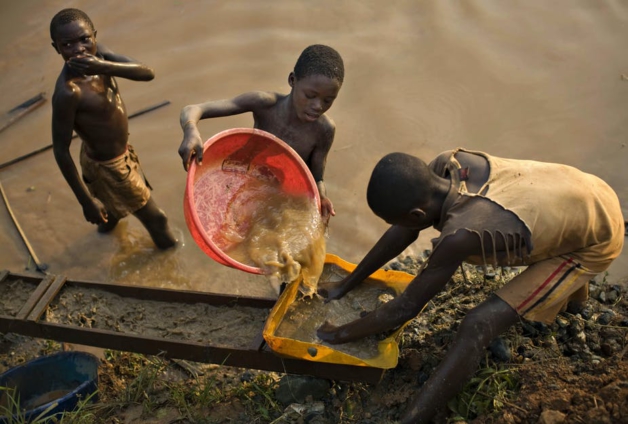Child Labour: One out of every ten children in Ghana are victims
Any work that deprives children of their childhood, their dignity, inhibits their potential and that is essentially harmful to their physical and mental development can be rightly classified as child labour.

The Commission on Human Rights and Administrative Justice (CHRAJ) says despite strong policies in putting an end to Child Labour, one out of every ten children in the country is still engaged in the worst forms of labour.
Any work that deprives children of their childhood, their dignity, inhibits their potential and that is essentially harmful to their physical and mental development can be rightly classified as child labour.
According to a press release by the commission to mark this year’s World Day against child labour, the commission said, the situation has worsened following the advent of the coronavirus and its attendant lockdowns and school closures.
“The issue of child labour remains a huge problem and though progress has been made over the past years it has been rather steadily; with COVID-19 pandemic posing a greater threat to stalling and reverting progress made,”
“Undoubtedly, the COVID-19 pandemic has greatly affected the rights of children globally. The emergence of this global pandemic with the associated closure of schools and lockdowns provoked a decline in the progress made in the fight against child labour,” the statement said.
Background
The World Day Against Child Labour(WDACL) was established in 2002 by the International Labour Organization(ILO) to raise awareness and activism towards Child Labour prevention.
The ILO earmarked June 12 annually to commemorate the WDACL and to resound the realities of child labour that remain persistent in the world.
The ILO was established in1919 with social justice objectives including the protection of children and young persons.
Furthermore, the commission associated the increase in child labour with the financial challenges faced by families during the pandemic.
It said a lot more need to be done despite June 12 being earmarked to resound the realities of child labour globally annually.
“To this end, the commission commits to supporting the government in this journey by drawing the attention of all stakeholders to some critical issues in this conundrum…We encourage all other stakeholders to continue to create awareness of the trajectories of the WFCL and admonish the government to implement relevant recommendations of the Universal Periodic Review(UPR),”
The CHRAJ urged the government to “tackle the root causes of Child Labour by implementing the NPA [National Plan of Action] objectives until the last child in Ghana is freed from child labour.”
The National Plan of Action was instituted from 2009 to 2015 to help the government “take immediate and effective measures to eradicate forced labour, end modern slavery and human trafficking, and secure the prohibition of the worst forms of child labour, etc.” as stipulated under Sustainable Development goal 8.7.
However, in 2017, phase 2 of the NPA was introduced to address the gaps identified in the NPA 1 and solidifying resolutions in achieving the United Nations SDG 8.7
The focus of this year’s World Day Against Child Labour is unveiled under the theme: “Act Now: End Child Labour!” This is a firm call to action and a departure from mere commitments or usual rhetoric.


